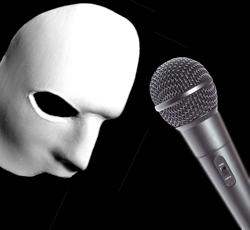
Caveats
Generally speaking, it is safe to use phantom power with dynamic microphones.
However, if you have the option to turn it off when it’s unneeded, you should.
The reason is safety. If there is ever a fault in the mic line that would short pin 1 (ground) to either pin 2 or pin 3, 48 volts of DC current would flow through the voice coil of the mic and it could be destroyed.
This doesn’t happen often, but why take the chance. If you can turn it off, do.
The original spec for phantom power called for delivering only 2 milliamps of current. Today, some mics require much more (the Shure KSM series for example, really wants 5-6 mA, while really high end mics want 10 mA).
Most modern sound consoles will deliver this current, but be aware of the needs of your mic. If you have a real high end condenser that just doesn’t sound as good as it should, check the phantom power current spec of your desk.
Of course, plugging a high end Schoepps Colett into a cheap Crate mixer is sort of like giving Michael Schumacher a Yugo to drive. But I digress…
Other Uses
As noted, phantom power can be used to power active DIs, such as a Countryman Type 85 or Type 10, or a Radial J48. While the Countrymans will run on a 9v battery, giving them a steady supply of 48 volts will help you sleep better at night.
Another cool use of phantom power is the Rat Sniffer. The Sniffer uses the 48 volts to diagnose mic cables, and indeed entire signal flows.
If you’re walking into a venue with a bunch of unlabeled snakes, you can plug the sniffer into an input on the snake, then switch phantom power on, one channel at a time. When the lights light up, that’s your line.
The Sniffer is also very handy at diagnosing cross patches, too. If you have an open pin, a polarity issue or other wiring malady, the Sniffer will let you know. Pretty nifty!
So there’s a little about phantom power. As you can see, it’s really not that mysterious; in fact, it’s pretty straightforward.
Mike Sessler is the Technical Director at Coast Hills Community Church in Aliso Viejo, CA. He has been involved in live production for over 20 years and is the author of the blog, Church Tech Arts . He also hosts a weekly podcast called Church Tech Weekly on the TechArtsNetwork.
